Voyage Across Time
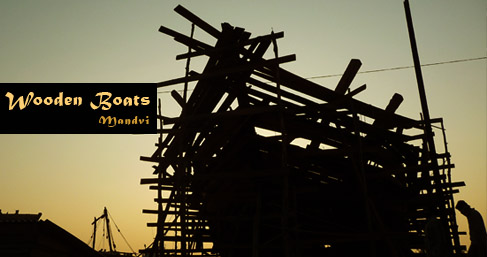
Where the river Rukmavati meets the Arabian Sea, at the ship building yard of Mandvi, it seems that time has stood still here. Half finished ribs of big wooden boats lie among harmonious clanging of bolts and hammers and who knows, maybe somewhere, some adventurers are getting all set to sail across the oceans to trade precious spices with exotic treasures of the unexplored lands.
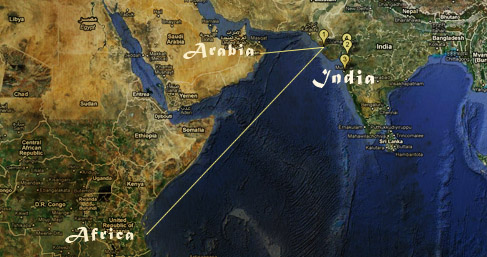
In the medieval times, Mandvi was a major seaport with ships that sailed to Arabia and Africa. The town stood at the intersection of two important trade routes, the maritime spice trade route and the desert camel caravan route, thereby having a prominent position in trading activities. The enterprising spirit of the Kutchhi navigators and traders had resulted in the development of five ports, Mandvi, Mundra, Jakhau, Lakhpat and Koteshwar in the Kutchh region. The port was also used as a summer retreat by the rulers of Kutchh.

In 1581 AD, Rao Khengarji, the first Jadeja ruler of Kutch, established the town of Mandvi and built a fort around it; parts of which still remain. Situated about 52 km from Bhuj, the Port of Mandvi was a profit-making centre of the Kutch state. The vessels would take fine cotton cloth, alum, grains and sugar from Mandvi port to Zanzibar and Arabia and would have treasures of dates, timber, hides and silks on their return. The rulers of Kutchh were held in high esteem as they had ports essential for imports and exports as well as the Mughal rulers’ pilgrimages to Mecca.
In the 18th Century, the ship building skill had developed to an extent that ashipyard to anchor and repair 400 vessels was established by the merchants during the reign of Rao Godji. By this time, Mandvi ships were sailing as far as England. Industrial revolution brought steam powered engines and colossal ships that travel around the world carrying much bigger loads and with far greater speed, but even then, the port of Mandvi still functions today. Nowadays, the master carpenters build boats for travelling shorter distances to the Gulf countries and also make fishing boats.
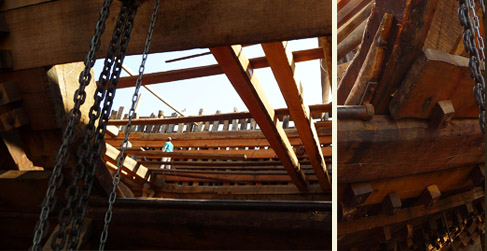
These sea going vessels, known as Kotia, are built almost entirely by hand and it is only in recent times that tools like electric drill for fixing bolts have started coming into use. In fact, the craftsmen were so adept at their jobs, that they would not even make sketches or measurements for making this vessel that would be facing the turbulent storms of the sea. The big rough planks of wood may appear irregular and unrefined, but it is the long and arduous process of skilled workmanship as well as complex feats of engineering ensuring that there are no imperfections risking the lives of sailors.
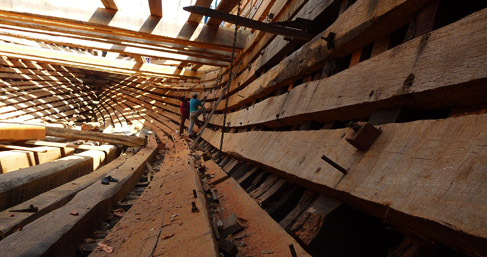
The building of a boat starts after the craftsmen get an order, with the specification of the weight it is supposed to carry. The boats are made from the strong Sal wood, procured from Gujarat and other states. The construction starts from bottom up, starting with a frame to support the shape the boat would take. One by one, big planks of wood are bent into the required shape over a fire and fitted together with enormous nuts and bolts. An average boat that is about 50 feet high and more than 200 feet long and will carry 50 to 1000 tonnes of cargo can take from 9 months to a year and a half to be built.
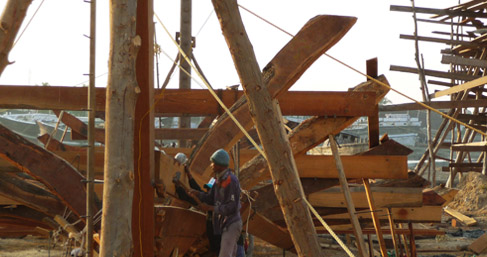
When the water comes in towards the coast during a high tide,everyone gathers their full strength to move the boat, with pulleys and chains, into the water. Built with just simple tools and sheer determination and dexterity, this enormous piece of brilliant workmanship is now ready and eager to have its taste of adventurous voyages across the tumultuous oceans.
The Mandvi boats are an example of how far human perseverance and strength can take handicrafts to in terms of scale. From carving miniature idols to building ships, the sleight of hands can realize any vision.

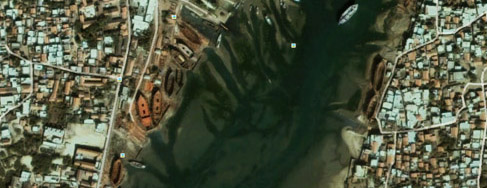

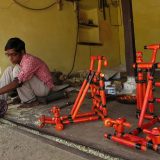







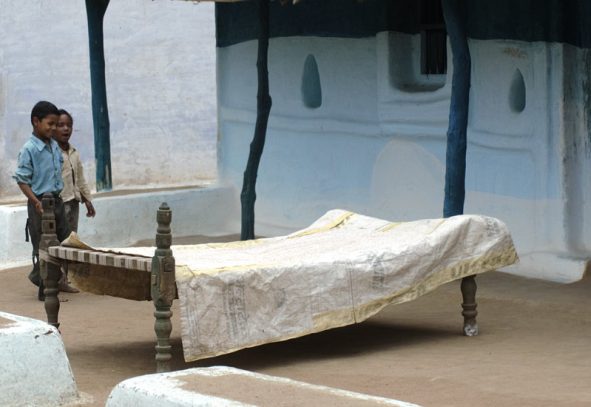
Ranjitsinh
We need 200 ton 80 feet boat how much cost